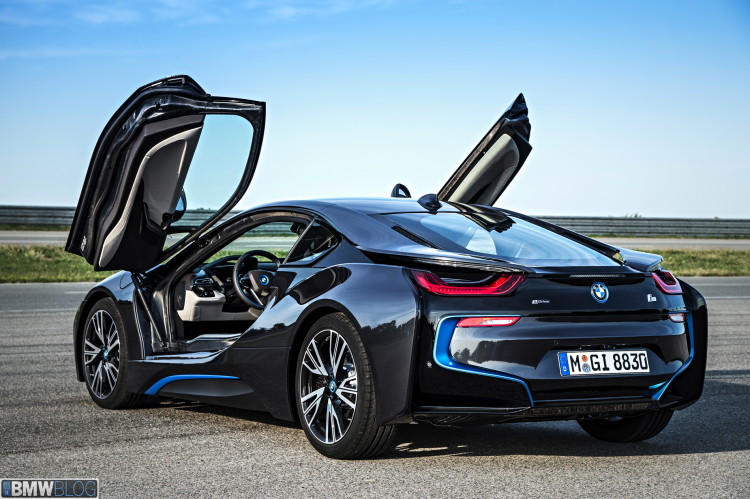With this BMW TV series you can get a closer look at the BMW i8. This time you can get more information about the performance of the BMW i8 as an integral part of the vehicle.
With the i8 BMW also introduces into production their new B38 1.5 liter three-cylinder petrol engine. We have previously tested the “baby-six” in a 1 Series Hatchback and we were quite impressed with its abilities. The little but potent combustion engine is transversely mounted behind the cabin and delivers 228 horsepower and 236 lb ft-of torque![]() . That’s 152 hp per liter, an impressive figure by any standards. BMW engineers confirmed that there is room for a bit more power, but the current level delivers the best efficiency.
. That’s 152 hp per liter, an impressive figure by any standards. BMW engineers confirmed that there is room for a bit more power, but the current level delivers the best efficiency.
Power is sent to the wheels via a six-speed automatic gearbox and a conventional torque converter.
At the front, but closer to the wheels, BMW placed an electric motor developing 129 horsepower and 184 lb ft-of torque. This is the same electric motor as in the BMW i3 but with less power (170 hp in the BMW i3). The electric motor drives the front wheels via a GKN two-speed automatic gearbox which always run in first gear while in eDrive mode but switches directly to second gear in the mixed modes. The energy is drawn from a 5 kWh lithium-ion pack placed along the central tunnel right behind the electric motor.
An additional e-motor is placed in the rear adjacent to the combustion engine. It produces 13 hp and 81 lb-ft of torque and while it can provide additional power to the rear wheel, BMW says that it’s main functions are to recharge the battery, start the combustion engine and in hybrid mode to smooth out power delivery and match up the revs when switching driving modes. Therefore the typical lag mode found in hybrid or combustion setups is removed.
All these add up to a combined 357 horsepower and 420 lb-ft of torque, 44 percent of it available from the moment you floor the throttle.






































































